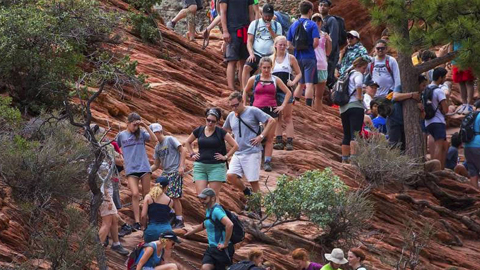Word is Out: Congestion, Marketing, & the Future of Utah's Mighty 5 NPs

It’s no secret that the sun-soaked canyons and soaring sandstone bridges of Arches National Park are no longer a secret. Visitation at Arches, and at all of southern Utah’s five biggest national parks, has rocketed over the last decade, attracting both international, national, and local fans to explore the switch-backing trails, scenic campgrounds and dramatic sandstone overlooks.
Utah’s “Mighty 5” advertising campaign was designed to attract out-of-state visitors to Arches, Canyonlands, Zion, Bryce and Capitol Reef national parks … and it worked. Now some of these parks suffer from congestion—crowded trails, packed parking lots and campgrounds booked to brimming months ahead of time. In recent research, Tatiana Drugova, Man-Keun Kim, and IORT Fellow Paul Jakus found the Mighty 5 campaign to have contributed to rapid visitation growth at Arches, Canyonlands, and Capitol Reef national parks. At Bryce Canyon and Zion, impact from the ad campaign was minimal, implying that increased visitation there was driven instead by the trends outside the promotion.
Managers at these congested parks are engaged in efforts to mitigate the environmental pressures associated with crowding, and have employed a new “demarketing” campaign—diverting potential tourists to high-quality alternative sites selected to match visitor interests.
Demarketing can take many forms; activity or length-of-stay restrictions, visitor capacity constraints, reservation systems, entrance fees or an emphasis on activity restrictions at certain sites. In southern Utah, marketers are employing the “Red Emerald” campaign to actively feature outstanding landscapes outside the national parks. For instance, rather than repeatedly featuring Zion National Park’s iconic and chronically overcrowded Angel’s Landing trail, marketers may direct tourists to another landscape-overlook trail in nearby Washington County that has stunning views and far fewer people. By directing tourist traffic to less-visited sites, visitor expenditures and the benefits of public lands tourism may be distributed more widely throughout rural regions of southern Utah.
To learn more about how a demarketing campaign might work for southern Utah, read the new research here.

